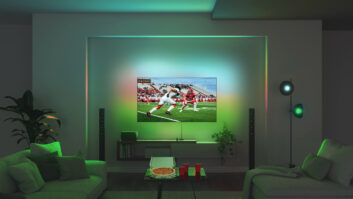The nation’s top appliance retailers and buying groups shrugged off news of The Home Depot’s expansion plans for white goods but conceded that they were keeping the home-improvement chain under close watch all the same.
Retailers dismissed the two-brand, one-aisle effort as too narrow to have much impact on their majap businesses, and criticized its kiosk approach for moving the category toward commodity status. Nevertheless, merchants acknowledged The Depot’s awesome selling power — and took GE and Whirlpool to task for inviting category disruption.
“It’s not a surprise,” said a spokesman for Sears, the country’s leading appliance store. “We knew they were testing the concept for over a year. While we take all competitors seriously, and Home Depot is a strong competitor, less than 100 linear feet is a very limited display.”
Unlike The Depot, Sears’ assortment allows consumers to shop “six leading brands side-by-side,” he said, which is one of the reasons that “consumers choose us more than the next 17 appliance dealers combined.”
Number two majap merchant Circuit City also downplayed The Depot’s appliance punch, despite Wall Street’s initial concern that both it and Best Buy would most feel its sting.
“Appliances are not the highest-margin products, and clearly, Circuit City has a much broader selection than what Home Depot will be offering,” a spokesman said. Number four-ranked Best Buy, whose 9% majap mix is about half that of Circuit’s, echoed Sears’ reaction in a terse statement. “We’ve been expecting it and take all competitors seriously,” the company said.
Neither has much to worry about, according to David Schick, a VP and a specialty retail equity analyst with Robinson-Humphrey, a subsidiary of Salomon Smith Barney.
“The sales impact on Best Buy and Circuit City is not completely compelling,” Schick argued. “Appliances are less profitable than their core consumer electronics categories, and their businesses are not dependent on major appliances. So the top-line impact will be barely measurable, and the bottom-line impact will be even less than that.”
Buying groups, at least for the time being, are also unruffled by Home Depot’s decision.
“We have people competing against them now,” said NATM executive director Bill Trawick, “and they’re not major factors at this point. They do substantial volume due to the sheer number of stores, but not a lot of business on a per store basis. Still, we’re letting GE and Whirlpool know we’re not happy.”
MARTA’s executive director Warren Mann also took umbrage with the majap makers, as well as The Depot’s no-overhead kiosk approach. “If Brand X wants to sell their products with pictures, then so will we. We’ll be thrilled to free up the floor space,” he said.
But Rick Bellows, merchandising director of Best Brands Plus, said this isn’t his fight: “The warring will be between Lowe’s, Circuit, Best Buy and Sears,” he observed. “Especially Sears, which is highly involved in kitchen remodeling. It’ll be a bloodbath. We’re not bulletproof, but I feel comfortable that we will continue to gain share through our secondary and tertiary market strategy.”
Individual dealers were less sanguine about The Depot’s doings. “Every washing machine they sell is taking a customer out of the marketplace,” said Gregg Richard, merchandising VP at P.C. Richard & Son, the nation’s seventh-largest majap merchant. “It’s going to hurt everybody. I don’t think any of our stores will not be affected.”
Citing a 1998 GE truckload sale where Home Depot “just slammed prices,” Richard appealed to major appliance vendors to “support the regional, value-added guys more than they do. Manufacturers should really focus on the retailers who sell their feature-added products, rather than focus on growing their business with retailers who treat their products like commodities.”
Agreed Doug Betts, a principal of Christie’s Appliance in Tucson, Ariz., “Appliances have pretty much become a commodity because manufacturers want to go to as many outlets as possible. I know one manufacturer,” he said, “that would sell them out of a vending machine if it could.”












